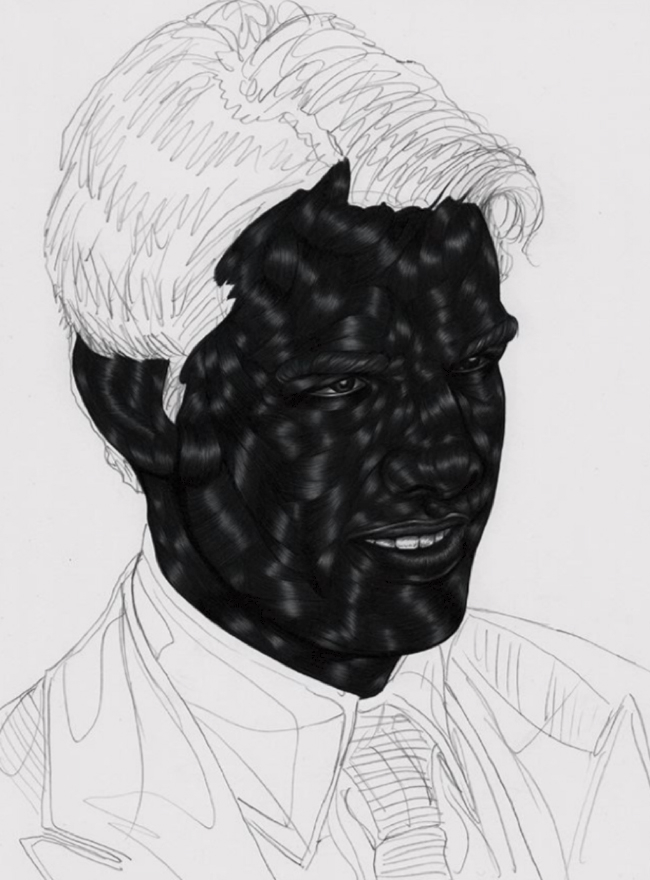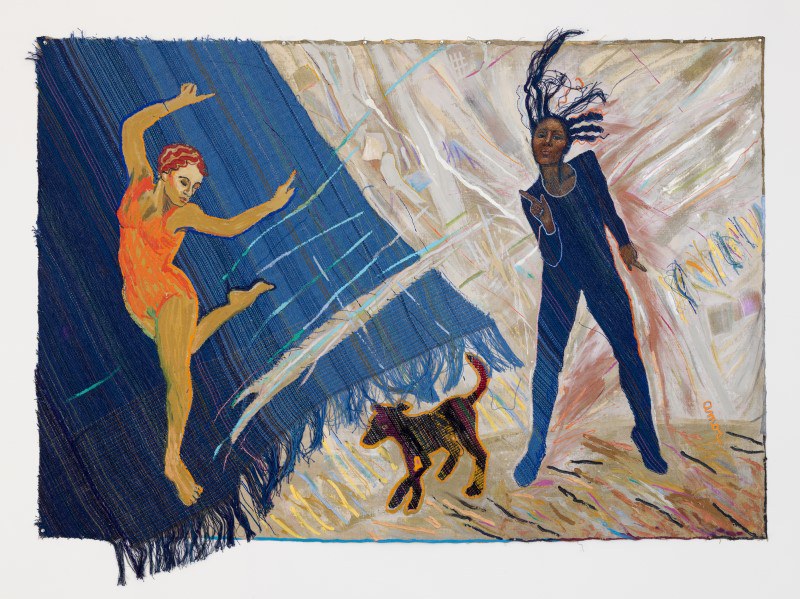
Black Dog Blues,
1983

Black Dog Blues is a key example from Emma Amos’s series of figurative paintings with weavings from the late 1970s and early 80s, which not only signaled a significant departure from the artist’s work on paper of the previous decade, but also allowed the artist to approach the representation of the black female body in new and pioneering ways. Titled after the 1927 blues song by Blind Blake, the work juxtaposes two central female figures, who are simultaneously separated and connected by the colors and composition of the picture plane: Ada “Bricktop” Smith, a legendary jazz singer from the early 20th century who was nicknamed for her red hair, light skin, and freckles, and a representation of a woman contemporaneous to Amos, with braids and darker skin and dressed in a blue leotard. The varied skin tones of both figures demonstrate how Amos’s political and formal interests in color coalesce in Black Dog Blues. “The terms used in describing painting have always held double meanings for me. We’re always talking about color, but colors are also skin colors, and the term ‘colored’ itself—it all means something else to me. You have to choose, as a black artist, what color to make your figures...butterscotch, brown or really black—but rarely white.” Expressive brushstrokes overlap with pieces of Amos’s hand-woven fabric that jumps out of the frame, enacting a sense of movement and liberation through materiality and collage. Here, the dimensionality of Amos’s canvas underscores her ambition to transform images of black women from objects of sexualized fantasy to agents of independence and grace.
Throughout her six-decade career, Amos has employed color theory—through painting, weaving, and experimental printmaking—to explore the politics of culture and identity. Part of a generation of black American artists who have only recently begun to receive recognition for their contributions, Amos is widely recognized for her activist work through political art collectives such as Spiral (1963–66) and Heresies (1976–93), and her work in printmaking and painting, constantly expanding possibilities of her medium. Moreover, Amos consistently interrogates and appropriates cultural histories and how black bodies, particularly women, have been depicted within them, drawing from the art historical canon, and the civil rights and women’s movements. “I feel that the static work that I was doing in the sixties had no place once I learned about the women's movement, once I learned about how I was being considered as a black artist. And so when I make a painting, I am trying to use both the expressiveness of the paint flow and the movement of whatever it is I'm using so that everything is in flux.” Black Dog Blues keenly weaves these concerns into a distinctly unique style that complicates and celebrates images of black beauty and strength.
More Acquisitions
-
![The Treatment 6 2015 copy]() Toyin Ojih Odutola, 2019
Toyin Ojih Odutola, 2019 -
![A large graphite and colored pencil drawing with a white frame wp:meta_valueall.]()
Equal, 2021
Tony Lewis, 2021
